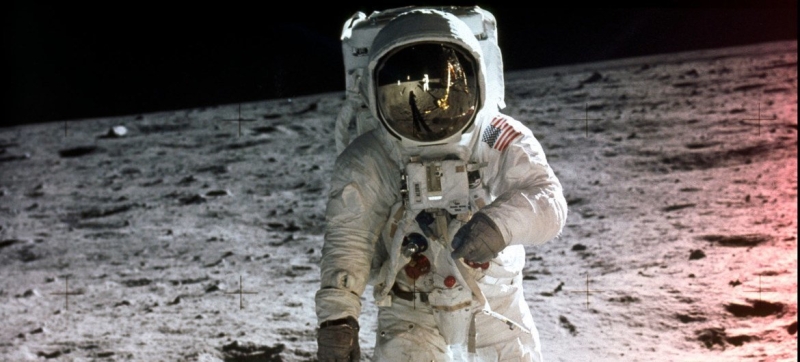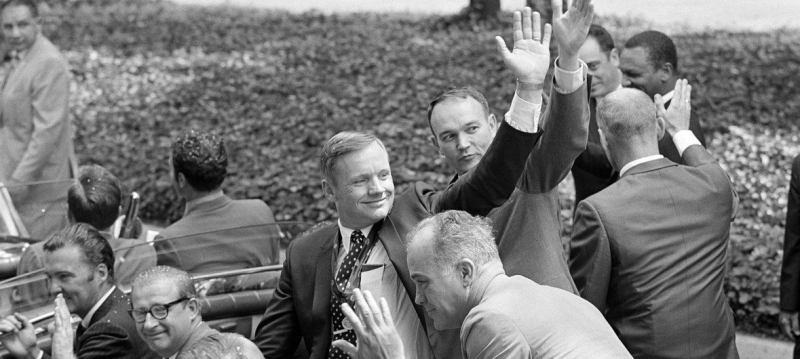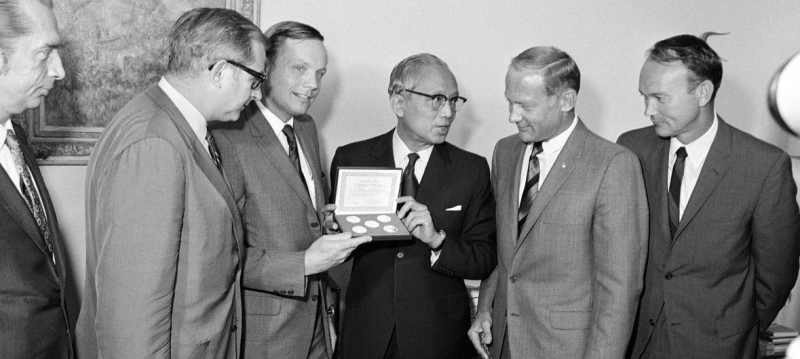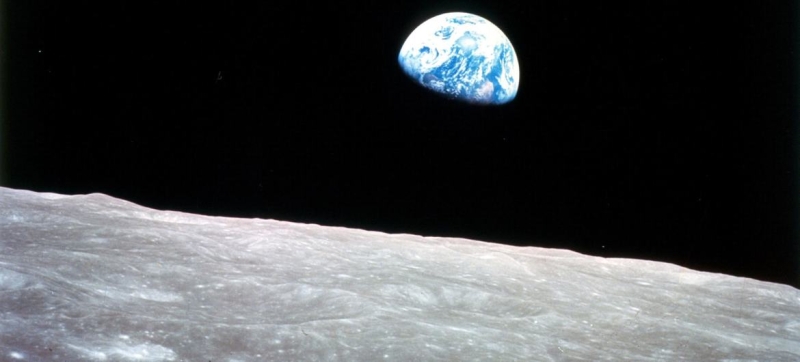
Astronaut Edwin Aldrin during his walk to the surface of the Moon. Photo taken by Neil Armstrong on July 20, 1969. International Moon Day – a tribute to space explorers Culture and education
Today the world celebrates International Moon Day, dedicated to the date of the first human landing on the Earth’s natural satellite. International Day is an occasion to remember the contribution, and often the heroism, of space explorers, scientists, engineers and other specialists, thanks to whose efforts the first manned interplanetary mission in human history became possible.
Our eternal and only companion
For thousands of years, people have been at a loss, thinking about the origin of the pale circle that appears in the sky at nightfall and in within a few days it turns into a crescent moon. The Moon, our only companion on our cosmic journey around the Sun, has captivated human imagination since ancient times. Its mystical radiance and endless change of phases forced the best minds of mankind to think about the depth of space and our place in the Universe.
Since ancient times, the Moon has served not only as a navigational guide, but also as an inspiration for the cultural and spiritual development of mankind. Artists depicted it on canvas, poets sang in verse, philosophers and scientists tried to unravel its secrets. The Moon served as a symbol of mysticism and romanticism, the embodiment of what is incomprehensible and eternal.
From a scientific point of view, the Moon remains an object of research and discovery today. Its surface, dotted with craters from meteorite impacts, holds keys to understanding the past of our planetary system. Missions to the Moon, both past and planned, continue to expand humanity’s knowledge of the formation of the solar system and the possibilities of space colonization.
The first scientific theory of the formation of the Moon was put forward by a British astronomer in 1878 George Howard Darwin. According to his theory, the Moon separated from the Earth in the form of a magmatic clot under the influence of centrifugal forces.
In 1984, the Giant Impact theory was collectively put forward at the Hawaii Planetary Science Conference. According to this version, the Moon was formed 4.6 billion years ago after the collision of the Earth with a hypothetical celestial body called Theia. The impact did not occur in the center, but at an angle, as a result of which most of the substance of the impacted object and part of the earth’s substance were thrown into low-Earth orbit. Although this theory also has shortcomings, it is currently considered the main one.

Apollo 11 crew members Neil Armstrong, Edwin Aldrin and Michael Collins at the UN. August 13, 1969.
International Moon Day
In 2021, the UN General Assembly proclaimed International Moon Day, which is celebrated annually on July 20. This date marks the anniversary of the first human landing on the Moon as part of the Apollo 11 mission.
“If we were able to leave the confines of planet Earth, then we are capable of solving problems that exist on Earth.” Astronaut Neil Armstrong, the man who first walked on the moon, said this while visiting UN headquarters three weeks after the historic flight.
If we were able to leave the planet Earth, then we are able to solve the problems that exist on Earth
Along with Armstrong, other Apollo 11 crew members Edwin Aldrin and Michael Collins arrived in New York on August 13, 1969. The astronauts brought as a gift to the UN an exact copy of the memorial plaque they left on the surface of the Moon. It is engraved: “Here people from planet Earth first set foot on the Moon. July 1969 AD. We come in peace on behalf of all mankind.”
Among the relics kept at the UN headquarters, there is another exhibit related to the historical flight , is a sample of lunar rock. It was a gift to the UN from US President Richard Nixon on July 20, 1970, as the international community celebrated the first anniversary of man walking on the Moon.

20 July 1970 Secretary-General U Thant presents the astronauts with a commemorative medal issued for the 25th anniversary of the UN.
Soviet lunar program
A few years ago, cosmonaut Alexei Leonov spoke about the Soviet lunar program in an interview with the UN News Service. It was planned that he would become the commander of the crew that was supposed to fly around the Moon in September 1968, and would be the first to set foot on its surface.
“We had three flights planned to fly around the Moon, and based on their results we were going to determine the crew to land on the Moon,” said Alexey Leonov. – The rocket for the flyby was a Proton with an upper stage. The N1 rocket was developed for landing on the Moon. Without waiting for it to be ready, we implemented the program with a flyby. The first crew was me and Oleg Makarov. The second crew was Valery Bykovsky and Nikolai Rukavishnikov. I was also the head of this program at the Cosmonaut Training Center. The readiness was very high, we even carried out electrical tests of our facility at the cosmodrome, which we had never done before. Perhaps, if it were not for the death of Sergei Pavlovich Korolev (the head of the Soviet space program) in January 1966, then, I am sure that we would have been six months ahead of Frank Borman (who flew around the Moon on Apollo 8 in December 1968).

View of Earth from lunar orbit.
UN and space exploration
Since the dawn of the space age, the United Nations has recognized that advances in space exploration have added a new dimension to human activity, opening up new opportunities to increase our knowledge and improve our lives. Since then, the UN has made it its mission to harness the unique opportunities offered by outer space exploration for the benefit of all mankind.
December 13, 1958, recognizing the common interest of mankind in outer space and shared desire to use outer space, the General Assembly adopted the first ever resolution on the peaceful uses of outer space. on the principles of activities of states in the exploration and use of outer space, including the Moon and other celestial bodies.
The UN Secretariat includes a Committee on the Peaceful Uses of Outer Space, as well as two subcommittee on this topic – scientific, technical and legal. Lunar activity is covered by both subcommittees.
“Who owns the lunar soil? Is it possible to mine minerals from asteroids? How to deliver these resources to Earth? “These are all complex issues,” Aarti Holla-Maini, director of the UN Office for Outer Space Affairs, said in an interview with UN News Service. “These questions call into question some of the fundamental principles of the Outer Space Treaty, which states that the resources of space belong to all humanity. This is a difficult discussion, but we continue to dialogue.”
